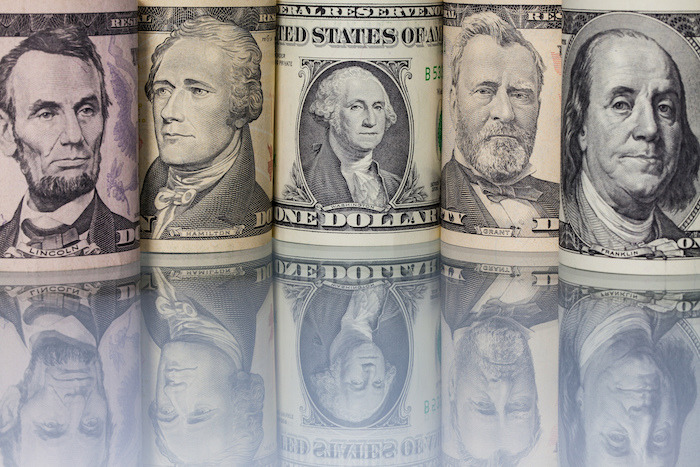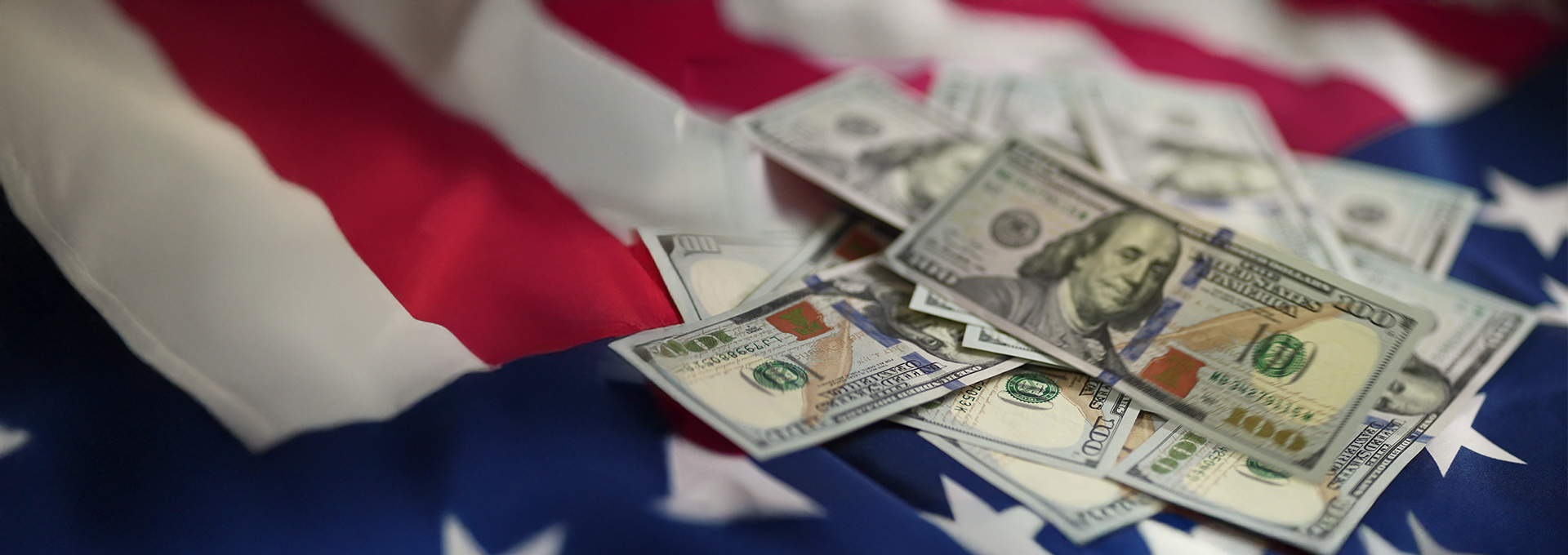💰Scratch to WIN a share of $50,000! Every customer wins. Ends Jan 31st. Learn More
ATMs in Canada - Can I Use My Australian Debit & Credit Cards in Canada?
Whether you are visiting Canada’s vibrant cities or you’re planning to explore its breathtaking natural wonders, having easy access to your funds is key to unlocking the full Canadian experience. From the historic streets of Old Montreal to modern malls, there’s plenty to do and buy, but the last thing you need is to run out of cash!
At Crown Currency Exchange, we know that you want to enjoy your holiday without having to worry about your finances. That’s why we’ve put together this ultimate guide to using ATMs in Canada. Here, you’ll learn more about the fees and charges associated with withdrawing cash using your Australian cards, along with some super helpful money-saving tips.
Safety and Security Tips for Using ATMs in Canada
Just as you would when using an ATM back home, there are some safety and security guidelines you should follow when you’re withdrawing cash in Canada. Here are some of our top tips!
Check for Skimming Devices
Before inserting your card into the cash machine, take a moment to inspect the card reader and keypad for any signs or tampering or for any strange-looking devices attached, as skimming devices are often placed on ATMs to steal card information. Should anything seem off or look suspicious, do not use that ATM and report it to the bank or private operator immediately.
Shield Your PIN
Once you’ve inspected the ATM and feel confident that it’s safe to use, make sure you cover the keypad (or screen if it’s a touchscreen ATM) when entering your PIN to prevent anyone from seeing or recording it. Make sure that you have your PIN memorised as well, rather than having it written down somewhere, as this can be very easy for someone to steal.
Stay Vigilant
Make sure you remain aware of your surroundings while you’re using the ATM and remain cautious of anyone standing too close or watching you. Don’t be scared to ask for space if you feel uncomfortable, and if you’re in any doubt, cancel your transaction and find another ATM to use. It’s important to remove any personal distractions, too, such as talking on the phone or wearing headphones, as this makes you a much easier target for theft or scams.
Use a Secure Connection
Whether you’re using mobile banking or an ATM with internet connectivity, make sure you’re using a secure network from a trusted Wifi provider or your cellular data connection. Do not connect to public or unsecured Wifi networks when conducting sensitive transactions, and as always, ensure you remain vigilant about your surroundings at all times.
Monitor Your Account
In the days following your transaction, keep a close eye on your account for any unauthorised or suspicious activity. If you see anything you don’t recognise, report it to your bank or credit card provider immediately, who will have their own processes in place to investigate and, if appropriate, reimburse you.
Planning Tips for Your Trip to Canada
To make the most of your trip to Canada, and to keep things as stress-free as possible, it’s essential to do some planning before you leave. This doesn’t have to be overly difficult, though, and with these top tips, you can get organised and start looking forward to your well-earned holiday.
Check Entry Requirements
Before you do anything else, ensure you have the necessary travel documents needed to visit Canada from Australia. Presently, Australian citizens are required to hold an Electronic Travel Authorisation (eTA) if travelling by air but not if arriving in Canada by land or sea (driving to Canada from the United States, for example).
You’ll also need to hold a valid Australian passport with at least six months left on it before the expiry date.
Choose the Right Season
Canada experiences distinct seasons, each offering a unique travel experience. So, consider the time of year you want to visit Canada and what activities you want to enjoy while in the country. For instance, if you’re planning to do a lot of hiking, it would be better to visit in summer. Or, if you want to admire the beauty of the maple trees and other fall foliage turning bright red, it would be best to visit in the autumn months.
Plan Your Itinerary
It’s also a good idea to create a rough itinerary for your trip, including all of the places you want to visit, activities you want to do, and the places you’ll be staying. When doing this, keep in mind the travel time between destinations and any national holidays taking place that could potentially disrupt your ideal plans.
Budget Wisely
Canada can be a relatively expensive destination, so it’s important to create a budget before your trip. Research the price of accommodation, transport, food, and activities in advance and keep an eye out for any deals, discounts, and free attractions that can help you save money and make the most of your budget.
Stay Prepared
You can never tell what might happen when you’re on holiday, so it’s also incredibly important to stay prepared for any eventuality. Make sure you have the number for the Australian Embassy in Canada saved to your phone, and take out a travel insurance policy ahead of your trip. This will protect you from any loss of money caused by cancelled travel, lost luggage, and medical emergencies.
Get the Best Exchange Rates on Canadian Dollars at Crown Currency
While you can use ATMs in Canada using an Australian credit or debit card, you will be charged for doing so. It’s also important to remember that you’ll be charged per transaction, so the more times you visit an ATM or use your card to pay for goods and services, the more fees you’ll incur.
As such, it’s best to create a budget, allowing for an extra 10%-20% for emergencies, and take cash with you rather than relying on cards and ATMs. At Crown Currency Exchange, you’ll find the best rates on AUD to CAD with no commission fees or hidden costs. Visit one of our many locations today to speak with our expert team, and let us get you on the road to your Canadian adventure.
FAQs
Can I Withdraw Money from ATMs in Canada?
Let’s start by answering the biggest question. Yes, you absolutely can withdraw money from ATMs in Canada using an Australian card, as many ATMs accept international payment cards. However, it is very likely that you’ll be charged a fee from the bank or company that owns the ATM to cover currency conversion and out-of-network withdrawals.
Your Australian bank may also charge a foreign transaction fee for using your card in Canada, so it’s a good idea to check with them beforehand to understand any potential charges you may incur when withdrawing Canadian Dollars.
But are there any ways you can reduce these fees and charges when using a Canadian ATM? Luckily, there are, and it’s all down to the type of ATM you use.
Bank-owned ATMS are owned and operated by specific banks, such as RBC, TD, Scotiabank, BMO, and CIBC. You’ll find these in bank branches and in retail locations, and these typically have lower fees for withdrawing cash using a foreign payment card, especially if it is an international network like Visa or Mastercard.
You’ll also find “White-Label ATMs” in Canada. These are independently operated by third-party companies and are usually found in convenience stores and gas stations, and while they do allow you to withdraw cash using an Australian card, the fees are usually much higher compared to bank-owned ATMs.
So, put simply, if you want to avoid paying high fees for withdrawing cash, use a bank-owned ATM that accepts Visa or Mastercard payment cards. Of course, you can also avoid fees altogether and keep your costs even lower by exchanging your money before your trip and using cash throughout your stay.
Differences Between Canadian and Australian ATMs
It’s easy to think that ATMs in Australia and Canada are pretty similar, and, for the most part, this is true. However, there is one key difference between them that you should be aware of if you’re planning to withdraw cash at a Canadian ATM.
At a Canadian ATM, you’ll be offered the choice of using the ATM in either English or French, and this is because Canada is a bilingual country. This language choice also complies with language laws in certain parts of Canada, such as Quebec and New Brunswick, where bilingual signage and services are mandated by language laws.
As such, you’ll make sure you make the right language choice when using a Canadian ATM. Don’t panic too much if you can’t speak a word of French, though, as there are usually flags to direct you to your preferred language selection on the screen, making it much easier to navigate.
What Are the ATM Fees and Charges in Canada?
While you will be charged an ATM fee for withdrawing cash in Canada, it’s important to get a good idea of exactly how much you can expect to be charged. Luckily, compared to using your Australian debit or credit card in some other countries, the fees in Canada are relatively low. However, as we explained above, the fees you’ll be charged also depend on who owns and operates the ATM you’re using.
For example, a bank-owned ATM will charge you a network access fee of up to $2.00 CAD ($2.20 AUD) along with a convenience fee of up to $5.00 CAD ($5.50 AUD). This means that you may be charged up to $7.00 CAD ($7.80 AUD) every time you use a bank-owned ATM.
When you use a privately owned ATM, the fees become higher, and you can expect to be charged an initial $2.00 CAD ($2.20 AUD) account fee, followed by a network access fee of up to $2.00 CAD ($2.20 AUD) along with a convenience fee of up to $5.00 CAD ($5.50 AUD). In total, you’ll be charged up to $9.00 CAD ($10.00 AUD) per transaction.
Top Tip: With these fees in mind, the best way of avoiding fees altogether is by exchanging your Australian Dollars for Canadian Dollars before your trip. You can find the best rates on AUD to CAD at Crown Currency.
What Should You Do if Your Card is Lost or Stolen in Canada?
Life is unpredictable, and even if you’ve made every possible effort to keep your cards safe, there’s no guarantee you may not accidentally lose them. Should this happen, the first thing you need to do is contact your bank or credit card company, who will freeze or cancel your cards straight away.
You may also be required to report the incident to the Canadian police if you believe your card has been stolen, and you’ll receive a police report that you can share with your card issuer to help with their investigation and to potentially get back any more that has been spent without your authorisation.
Should You Take Cash to Canada?
As with any trip abroad, preparation and organisation are key, and one of the best ways of staying prepared for any eventuality is by taking cash with you. You’ll also save yourself a lot of money on fees and unfavourable exchange rates, so it’s a win-win situation.
There are some other benefits to taking cash with you when visiting Canada, too. Firstly, it’s much easier to budget with cash, as you can keep a clearer track of your spending by seeing how much money you physically have left. This ensures you don’t accidentally overspend and, again, means that you don’t get stung by ATM fees or International Transaction Fees when using your cards.
You’re also offered peace of mind when you have cash, as you know you’ll have immediate access to funds for everyday expenses or unexpected situations. There’s nothing worse than finding you aren’t able to pay for goods or services because the vendor doesn’t take card payments!








